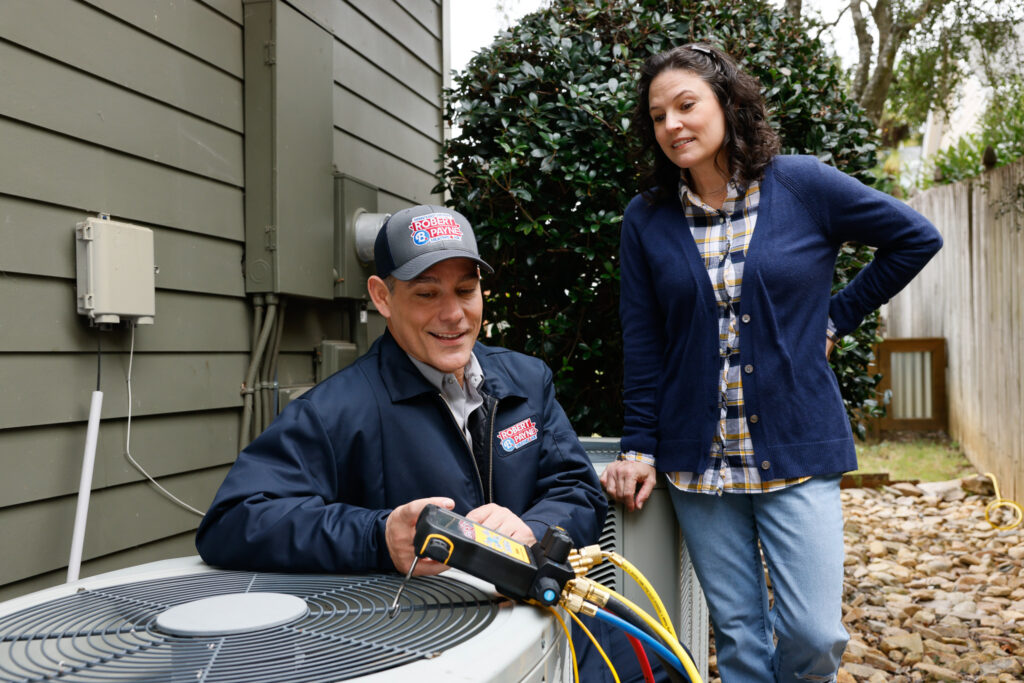Central systems such as furnaces, boilers, and heat pumps have dominated the heating system landscape for a long time. But now there’s a new kid on the block that is rewriting the rules for how homeowners heat (and cool) their humble abodes. It’s called a mini-split heat pump.

What is Heat Pump?
A heat pump is a device that transfers thermal energy from one location to another. It uses mechanical and electrical components to move heat from one place to another while avoiding the burning of any fuel. Heat pumps can be used in both heating and cooling applications by extracting heat from outside air, geothermal sources, or other locations and transferring it over to your home or business. Heat pumps are considered a highly efficient and cost-effective way to control energy costs, as they can dramatically reduce the need for burning fossil fuels such as oil, gas, or propane. Heat pumps also tend to last longer than traditional HVAC systems, reducing repair and maintenance costs over time. In addition to providing efficient heating and cooling, heat pumps also help reduce your carbon footprint. By transferring the heat from one area to another instead of burning fuel, you are helping to reduce emissions and conserve energy. Heat pumps can also provide other benefits such as dehumidification in the summer months and improved indoor air quality. Whether you’re considering a new heat pump for your home or business, or are looking to replace an existing system, there’s a lot to consider. To learn more about the benefits of heat pumps and how to choose the best system for you, contact an experienced HVAC contractor today. They can talk you through the process and help you find the perfect product for your needs.
How Does a Mini-Split Heat Pump Work?
Instead of one large unit that distributes heat to the entire house, a small mini-split unit is installed directly in the room it’s intended to serve. This eliminates the need for complicated ductwork, which reduces installation costs and is great news for rooms that were previously difficult to reach. Like central heat pumps, a mini-split heat pump captures heat from one area and moves it to another. So you can use the same system for heating in the winter (moving heat from outside to inside) and cooling in the summer (moving heat from inside to outside). As with any HVAC technology, there are many benefits of mini-split heat pumps, as well as some drawbacks for you to consider before installing them in your home.
Pros of Mini-Split Heat Pumps
- Precise zone heating. Since each room has its own heating source, there’s no more fighting over the temperature or heating unused rooms.
- Energy efficiency. Between heat pump technology and the small unit size, a mini-split system is very energy efficient for both heating and cooling, saving you money all year long.
- Simple installation. As mentioned before, the lack of ductwork makes installing a mini-split heat pump much easier than traditional HVAC systems. You can even choose models with interior components that match or blend into your existing décor.
- Improved air quality. Without long ducts to collect dirt, pet hair, and other debris, a mini-split system allows you to breathe easier.
- Small size. One of the main benefits of mini-split heat pumps is their size. Not only do they take up less space, but most models are lightweight and can be easily moved from room to room if you decide to change the layout of your home.
- Indoor design flexibility. Mini-split indoor air handlers can be hung from the ceiling, wall mounted, or even left standing on the floor near your furniture.
Cons of Mini-Split Heat Pumps
- Upfront cost. In some cases, mini-split heat pumps can be more expensive to install than a traditional heating system – especially if you need multiple units in your home. But remember, some of that money can be regained from lower monthly energy costs.
- Appearance. Since a mini-split system is usually mounted on the wall, it will be noticeable and take up some wall space. Some people prefer the more “hidden” look of a central system.
- Need for the correct size. It’s very important to install an appropriately sized mini-split system in a home or business. If the unit is too large or small, it will not be as energy-efficient, which negates one of its biggest benefits. Fortunately, a qualified HVAC professional should have no problem calculating the correct size for your space.
Mini-Split Heat Pump Installation in Fredericksburg
A ductless mini-split heat pump can be an excellent alternative to a traditional heating/cooling system, especially here in Virginia. To find out if this technology is right for your home, or to get a no-hassle estimate, call Robert B. Payne at 540-373-5876.






